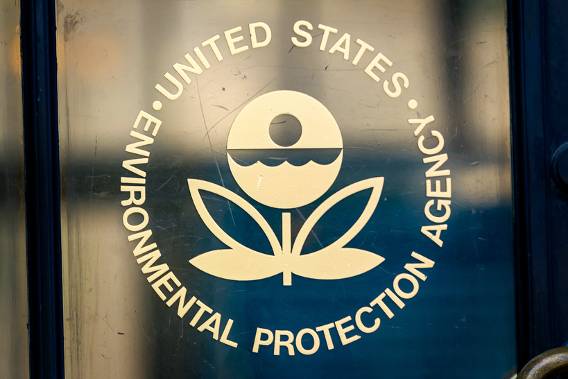EPA Proposes Asbestos Ban on Chrysotile
Asbestos Exposure & BansWritten by Tim Povtak | Edited By Walter Pacheco

The U.S. Environmental Protection Agency proposed a potentially historic ban April 5 that would prohibit all current uses of chrysotile asbestos.
Chrysotile is the only known type of asbestos still being imported into the country today.
The EPA asbestos ban would prohibit the ongoing importation of raw asbestos along with the manufacturing, processing, distribution and commercial use of products containing chrysotile asbestos. It is being proposed under the Toxic Substances Control Act, which was amended in 2016 and designed to address the safety of existing chemicals.
Asbestos is still used in the U.S. today in products such as diaphragms, sheet gaskets, oil-field brake blocks, aftermarket automotive brakes and linings, and other vehicle friction products.
“We’re taking an important step forward to protect public health and finally put an end to the use of dangerous asbestos in the United States,” said Michael Regan, EPA administrator.
EPA Asbestos Ban Would Impact Chloralkali Industry
All raw asbestos imported by the U.S. today – an estimated 300 metric tons in 2020 – is used by the chloralkali industry, which will be hurt the most financially by the proposal. It uses asbestos in the manufacturing of semipermeable diaphragms for making chlorine.
The American Chemistry Council, a lobbying group for the chemical industry, blasted the EPA’s proposed ban of asbestos in a statement this week, insisting it would reduce the domestic supply of chlorine, potentially disrupting the drinking water supply.
“If enacted, the EPA’s proposed rule would ban the manufacture of nearly one-third of the chlorine and sodium hydroxide chemicals and have significant adverse effects on the supply of the nation’s drinking water,” the statement said.
According to the EPA, there are only 10 chloralkali factories still using asbestos diaphragms in the U.S. and that use is declining. Other plants are already using alternatives to asbestos.
Manufacturers Have 2 Years to Comply
Although asbestos is heavily regulated today, and its use has dropped dramatically in recent decades, the push for an asbestos ban has intensified in recent years. More than 60 countries worldwide already have instituted some degree of a ban.
The EPA blocked most uses of asbestos in 1989 under the TSCA, but a federal appeals court overturned much of the ban in 1991 after considerable lobbying by the industry.
If passed, the prohibitions banning asbestos diaphragms and sheet gaskets would take effect in two years. Prohibitions related to many of the other products would begin in 180 days.
This latest proposal comes in the wake of the EPA’s recent Risk Evaluation for Asbestos Part 1, which found unreasonable risk to human health for all ongoing uses of chrysotile asbestos.
The EPA is currently in the midst of Part 2 of its risk evaluation, which is scheduled to be completed by 2024. It will include other types of asbestos, the use of asbestos in talc products and legacy asbestos left behind after decades of unbridled use.
Proposed Asbestos Ban Coincides with Awareness Week
Asbestos was once a coveted, versatile ingredient, valued for its ability to resist heat and strengthen anything with which it was mixed. It was widely used in construction and thousands of consumer products. Unfortunately, the microscopic fibers are toxic when inhaled, causing a wide range of illnesses, including lung cancer and mesothelioma.
Legislative efforts to ban asbestos have been building in Congress. Earlier this month, the U.S. Senate unanimously passed its annual National Asbestos Awareness Week resolution.
The resolution urges the Office of the Surgeon General to warn and better educate citizens about the public health issues associated with asbestos exposure.
Regan signed the latest proposed rule document April 5 and submitted it for publication in the Federal Register. The EPA will be accepting comments on the proposal for 60 days.
“This is a landmark step forward,’’ said Linda Reinstein, co-founder and president of the nonprofit Asbestos Disease Awareness Organization. “The reality is, now we have part one. We still need Congress to step up.”






